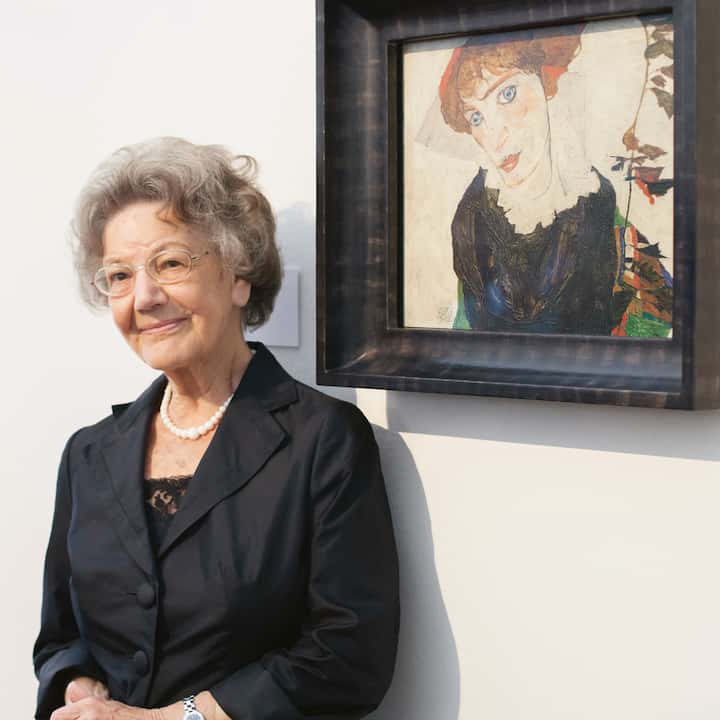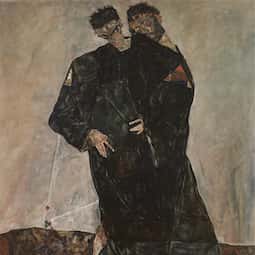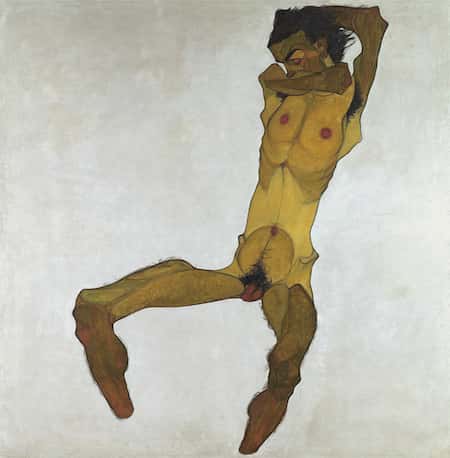interviewRobert Seydel
"Schiele Hit like a meteor"
beautyand abyss
Elisabeth Leopold on her fascination with Egon Schiele
Egon Schiele’s unflinching representation of ugliness attracted few fans. But that changed once the ophthalmologist Rudolf Leopold (1925-2010) started collecting his works in the 1950s. Egon Schiele’s (1890-1918) standing – and with it the prices for his paintings and sketches – rose virtually overnight. Today he is ranked among the most important expressionists of them all. The world’s largest and most significant collection of his works can be seen at the Leopold Museum, which was founded by husband-and-wife art collectors Rudolf and Elisabeth Leopold. More than 40 paintings and around 190 works on paper can be seen there alongside countless other examples of Viennese Modernism – from Gustav Klimt to Wiener Werkstätte. In an interview Elisabeth Leopold talks about Egon Schiele’s controversial œuvre as well as the painter Gustav Klimt and his influence on the young expressionist.

Elisabeth Leopold next to Schiele’s Portrait of Wally (1912) at the Leopold Museum
© Leopold Museum/APA-Fotoservice/Ian Ehm

Egon Schiele, The Hermits, 1912
© Leopold Museum, Vienna
Dr. Leopold, what is likeable about Schiele?
His absoluteness. His stubbornness. Which I also saw in Rudolf Leopold.
Were there any similarities between the two?
I couldn’t say. We didn’t know Schiele. But perhaps they were similar, as far as persistence went. After all, my husband would not deviate from the line he took. When he began to collect Schiele’s works, people poked fun at him. But he continued anyway.
How did you first come into contact with Schiele’s œuvre?
Through my husband. The first Schiele picture that I saw was the gouache version of the Tote Stadt (Dead Town). Impressive. Each building had a face. Schiele made the buildings appear “frail”. Half of the plaster work has crumbled away. It is what we call ugliness. But I am now so used to it that a freshly painted house is anathema to me. Not a single line on this picture is drawn with a ruler. Everything is in flux, everything is floating. That accounts for its lively, dreamlike qualities. My husband bought the picture in 1950.
What was it about Schiele that fascinated your husband?
His brilliance as a draftsman. In my view, Schiele was the best sketch artist of the twentieth century.
What was Schiele’s standing at the start of the twentieth century?
He was unknown. His works were bought by a couple of collectors such as Heinrich Benesch, Carl Reininghaus, Oskar Reichel and Arthur Roessler. Schiele came to their attention in 1909 at Gustav Pisko’s gallery in Vienna at the first exhibition of the Neukunstgruppe, which was founded by Schiele and various other artists.
You once described Schiele as the “bugbear of society” …
I would almost go so far as to say that Schiele hit like a meteor. Especially his nudes from 1910. We have one of his most interesting oil paintings here at the Leopold Museum: the “yellow nude”1. It continues to unsettle people to this day. Clearly a person this yellow is hardly beautiful. But it shows visitors how energetically drawn the lines are and how fantastically this figure floats in a space similarly devoid of air.
How great was Gustav Klimt’s influence on Schiele, in reality?
Klimt became the uncrowned king of the artists in Vienna with the foundation of the Secession in 1897, at the very latest. He invented Viennese Jugendstil. And as a portraitist to the rich he was a darling of society. But he also had a place in his heart for the younger generation. He once said “The young are brushing me aside. And that’s the way it should be.” He invited Schiele and Kokoschka to the Kunstschau exhibitions. That was an act of greatness. And Klimt also gave Schiele great support after his time in prison.
That was in 1912 …
Yes, Schiele’s most productive year.
Why was 1912 such an important year?
He moved to Neulengbach in Lower Austria at the end of 1911. He felt extremely at ease there. And it was here that his burst of creativity began. Incarceration2 interrupted his creative flow. But his powers gradually returned after his release. And who should cross his path? Klimt. He helped him get back on his feet and recommended him to one of his major patrons, August Lederer3. That was Mr. Klimt’s greatest gesture. Klimt felt a kind of paternal love towards Schiele. And Schiele was incredibly grateful to Klimt.
What is Schiele’s main work in your view?
"The Hermits", which he painted out of gratitude to Gustav Klimt. The picture shows these two figures, people of emotion, who are supporting each other, but sooner or later must collapse, under a barren sky in a cold world. There is a letter from Schiele about this painting, in which he writes: “It arose from pure ardency.” That is just wonderful.

Egon Schiele, Seated Male Nude (self-portrait), 1910
© Leopold Museum, Vienna
Death is a recurrent theme for Schiele. Was he melancholic?
I don’t think so. He reminds me of Mozart a little: an incredible genius, but childishly naive, ironic and a little nasty. When visiting Arthur Roessler at Lake Traunsee he brought some giant wooden crates with him containing a model railway. He set it up, even making the various noises while playing with it. His fondness for model railways stemmed from his childhood. His father was a stationmaster.
In his short life – he only lived to the ageof 28 – Egon Schiele produced more than 350 paintings and around 2,800 watercolors and sketches. What drove him?
As a matter of fact, he was very hard working. He was passionate about his creations, and was compulsive.
Can you see any contemporary artists who could end up assuming a similar significance to Schiele?
Anselm Kiefer is a very interesting contemporary painter. I find his subject matter important, such as his treatment of the Shoah. It is not possible to mourn enough over the Holocaust.
- 1Seated Male Nude (self-portrait)
- 2From April 13, 1912 Schiele spent 24 days in prison awaiting trial on suspicion of “endangering public morality and outraging public decency”.
- 3August Lederer was an Austrian industrialist, collector and patron of the arts who chiefly backed Gustav Klimt.